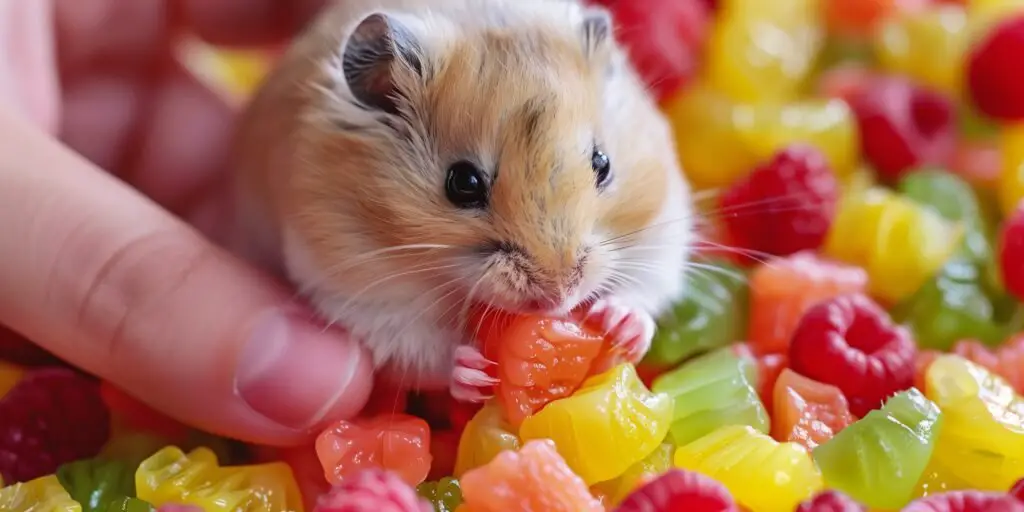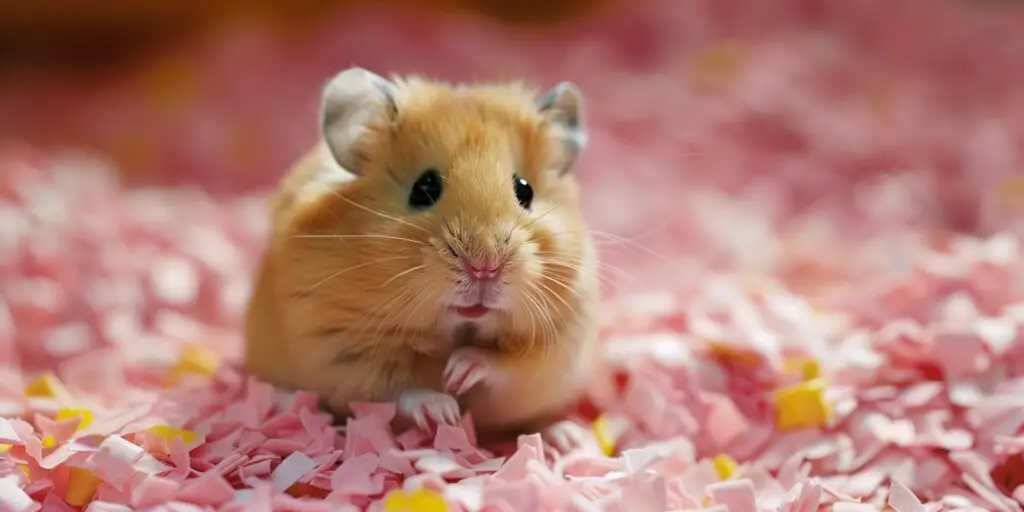When you bring a little hamster friend into your home, you might wonder how often to fill their bowl. Well, lucky for you, it’s pretty straightforward. You should feed your hamster once a day, and doing so in the evening is best. Why the evening, you ask? These little critters are nocturnal, which means they love to munch on their food when the sun goes down. It’s like their own little midnight snack – but on time!
Now, let’s talk turkey – or, in this case, pellets. How much should you toss into their dish? Aim for 1-2 tablespoons of hamster pellets. Yes, it doesn’t seem like much, but for a creature that could fit in your pocket, it’s a feast.
Here are some golden rules to keep in mind:
- Avoid overfeeding. It might be tempting to refill that bowl whenever it looks empty, but hold your horses! Hamsters are pretty good at managing their meals. Plus, they often stash away some grub for later in their cozy beds or hidden corners of the cage.
- Monitor weight regularly. If you see your hamster tipping the scales, it might be time to cut back on those pellets. Just like humans, maintaining a healthy weight is key for a happy, healthy life.
Every hamster is unique, and keeping an eye on their eating habits along with their weight will keep them in tip-top shape.

KEY TAKEAWAYS :
- Feed a hamster once a day in the evening, with 1-2 tablespoons of pellets.
- Avoid overfeeding to prevent health issues and monitor weight regularly.
- Hamsters can survive 3-4 days without food but should be fed regularly to prevent stress and maintain health.
- Fresh food should be replaced daily, pellets checked and adjusted and stored in airtight containers.
- Syrian hamsters need heartier portions, while Dwarf hamsters should watch their sugar intake.
- Treat vegetables as surprise guests 1-2 times a week, washed and chopped into small pieces for easy consumption.
What Hamsters Eat Each Day
Talking about what to toss into the little critter’s bowl each day, we’ve got a straightforward lineup but with a twist for those treat days. Let’s dive in.
Starting with the Main Diet, your whiskered buddy thrives on a base of pellets and fresh veggies. A balanced bowl will have:
- Pellets that are specially formulated for hamsters. These are the main course, folks.
- Fresh vegetables to add some variety. Think tiny pieces of broccoli or a slice of bell pepper.
Now, for the fun part—Treats and Supplements. Just like us, hamsters love a sweet treat, but not too much. Imagine their eyes lighting up at the sight of:
- Carrot
- Strawberry
- Banana
- Cucumber
- Raspberry
- Spinach
Remember, these goodies should only make a cameo 1-2 times a week in their diet.
Back in my college days, I had a hamster named Mr. Fluffles. He had a sweet tooth for strawberries. Whenever I treated him, which was strictly twice a week, he’d do this little happy dance. It was his way of saying, “You nailed it, buddy!”
Balancing their diet between the must-haves and the nice-to-haves keeps them in tip-top shape. It’s all about mixing it up while keeping an eye on the treat-o-meter to ensure those little treats remain exactly that—treats.
Duration Hamsters Can Go Without Food
It seems some hamsters are aspiring to be tiny Houdinis, making their food disappear like magic! But jokes aside, hamsters can actually survive 3-4 days without food. Yet, let me tell you, just because they can, doesn’t mean they should. It’s like trying to sprint a marathon on an empty tank — sure, you might drag yourself across the finish line, but at what cost?
Now, let’s get to the meat of the matter, or should I say the pellet of the problem? The importance of regular feeding is not just about filling their little bellies. Here’s why sticking to a feeding schedule is more crucial than you’d think:
- Prevents stress: Imagine waking up not knowing when your next meal will be. That uncertainty can turn even the chillest hamster into a tiny ball of stress. By feeding them on the dot, you’re not just giving them food, but also peace of mind.
- Keeps them healthy: It’s not rocket science; a well-fed hamster is a happy and healthy hamster. Regular meals ensure they’re getting all the nutrients they need to do… well, hamster stuff, like running on their wheel at 2 a.m.
Next time you’re pondering whether Fluffy can skip a meal or two, remember, it’s not just about survival. It’s about keeping them spry, stress-free, and ready to tackle their next hamster-sized adventure.
Changing Hamster Food

First things first, always swap out any fresh food that’s left uneaten daily. Yes, daily! These little guys can be quite picky, and we don’t want any spoiled food in there, making a mess, do we?
Now, the pellet bowl – the main event of the hamster’s dining experience. You gotta check on it daily too. It’s like filling the tank for a tiny, fluffy car that runs all night. At times, they eat everything, while at other times, you will find that they haven’t touched much. Just keep an eye on it and adjust as needed.
Keeping their stash fresh is another biggie. Imagine chowing down on stale cereal every day – no fun, right?
Here’s a pro tip: stash their food in a cool, dry place. Humidity and heat are big no-nos. And to lock in that freshness, use airtight containers. Think of it as the hamster food vault.
I remember once, I thought I could just keep the food in its original bag, clipped and all. Nope, a rookie move. A few days later, I noticed it wasn’t as crisp. Lesson learned. After switching to an airtight container, it was night and day. Plus, seeing how excited my little buddy got for mealtime again was all the proof I needed.
There you have it! Change out the fresh stuff daily, keep that pellet bowl in check, and store the food like it’s gold.
Special Dietary Needs
Not all hamsters munch on the same grub. Syrian and Dwarf hamsters need different menus to keep their little wheels running.
Feeding Syrian and Dwarf Hamsters
First off, Syrian hamsters are the solo artists of the hamster world. They like their space and their food portions large. These guys can handle a heartier scoop of food due to their size. On the flip side, Dwarf hamsters, the social butterflies living happily in groups, need to watch their sugar intake. Their petite bodies are not great at handling the sweet stuff, making diabetes a real concern. So, when dishing out treats, remember:
- For Syrians: Go ahead, fill that dish a little more.
- For Dwarfs: Take it easy on the sugars.
Vegetables in Diet
Vegetables are like the surprise guests at a hamster’s feast but drop by only 1-2 times a week. Too much of a good thing, and you might upset their tiny tummies. When serving up these green goodies, keep these tips in mind:
- Always wash the vegetables to get rid of any nasty chemicals.
- Chop them into hamster bite-sized pieces. Think little nibbles, not big chomps.
Imagine trying to stuff an entire carrot into your mouth; that’s what it’s like for them with regular-sized veggie portions. So, keep it small and your hamster will thank you – in its own squeaky way, of course.

In this post, we talked about feeding hamsters right. We saw when and what to feed them. Remember, feed once a day, give fresh veggies, and don’t overfeed. Change uneaten food daily. Keep their diet fit for their size and type. This keeps them happy and healthy. Stick to these tips for a joyful hamster life.




